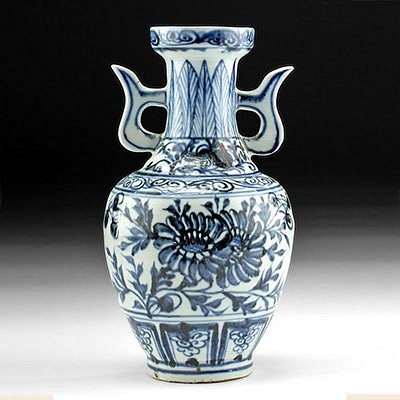Jemdet Nasr Jasper Cylinder Seal Bead with Ibexes
Lot 28
About Seller
Artemis Gallery
686 S Taylor Ave, Ste 106
Louisville, CO 80027
United States
Selling antiquities, ancient and ethnographic art online since 1993, Artemis Gallery specializes in Classical Antiquities (Egyptian, Greek, Roman, Near Eastern), Asian, Pre-Columbian, African / Tribal / Oceanographic art. Our extensive inventory includes pottery, stone, metal, wood, glass and textil...Read more
Estimate:
$1,600 - $2,800
Absentee vs Live bid
Two ways to bid:
- Leave a max absentee bid and the platform will bid on your behalf up to your maximum bid during the live auction.
- Bid live during the auction and your bids will be submitted real-time to the auctioneer.
Bid Increments
| Price | Bid Increment |
|---|---|
| $0 | $25 |
| $300 | $50 |
| $1,000 | $100 |
| $2,000 | $250 |
| $5,000 | $500 |
| $10,000 | $1,000 |
| $20,000 | $2,500 |
| $50,000 | $5,000 |
| $100,000 | $10,000 |
| $200,000 | $20,000 |
About Auction
By Artemis Gallery
Nov 19, 2020
Set Reminder
2020-11-19 10:00:00
2020-11-19 10:00:00
America/New_York
Bidsquare
Bidsquare : Ancient Treasures & Holiday Jewelry
https://www.bidsquare.com/auctions/artemis-gallery/ancient-treasures-holiday-jewelry-6035
Travel around the world and back in time and be amazed at the treasures you will find! Antiquities from Egypt, Greece, Italy and the Near East, Asian, Pre-Columbian, African/Tribal/Oceanic, Native American, Spanish Colonial, Fine Art, much more. Shop early for the holidays! Artemis Gallery info@artemisgallery.com
Travel around the world and back in time and be amazed at the treasures you will find! Antiquities from Egypt, Greece, Italy and the Near East, Asian, Pre-Columbian, African/Tribal/Oceanic, Native American, Spanish Colonial, Fine Art, much more. Shop early for the holidays! Artemis Gallery info@artemisgallery.com
- Lot Description
Ancient Near East, Jemdet Nasr period, ca. 3100 to 2900 BCE. A jasper cylinder seal of rich red hues, skillfully incised with a band of running ibexes. The accompanying clay rollout reveals five large ibexes (or possibly antelope) motifs running in the same direction. Note that the artisan was certain to delineate all four legs of each animal in order to completely define it, yet the number of antlers is probably exaggerated in order to convey their motion or perhaps suggest the presence of others. This highly schematized composition was favored for squat-shaped seals which became very popular towards the end of the fourth millennium BCE. Iconography of the ibex was replicated in gold, bronze, and stone, in visual culture of the ancient Near East as well as Central Asia. The ibex symbolized virility, and by extension health, strength, and power. Hunting scenes were also popular signs of the leisure activities of elites in these parts of the ancient world, and the five ibexes running here may be part of the hunt. A lovely example that comes with a custom stand also displaying a clay rollout of the seal. Size: 0.7" W x 0.7" H (1.8 cm x 1.8 cm)
Cylinder seals played a major role in the daily life of the Ancient Near East. Known as kishib in Sumerian and kunukku in Akkadian, royals, government officials, scribes, and slaves used them to transact business and send correspondence. They were worn around the neck or wrist and served as a signature and a guarantee, rolled into the moist clay of accounting and governance documents. They also link our modern world to the past - thousands of years ago, people were concerned with security and authenticity for the documents that they used to conduct business. Cylinder seals were a technological solution to a pressing problem, and their scenes are often complex to prevent forgery and identify individuals.
See another cylinder seal of a parallel squat form (though carved from limestone) and with similar ibex/antelope motifs at the Smithsonian Institute (accession number F1999.6.16).
Cf: Collon, Dominique. 2005. First Impressions: Cylinder Seals in the Ancient Near East. London: British Museum Press.
Provenance: private Zaveloff collection, Lakewood, New Jersey, USA, acquired from Venus Gallery, Israel, in 2002
All items legal to buy/sell under U.S. Statute covering cultural patrimony Code 2600, CHAPTER 14, and are guaranteed to be as described or your money back.
A Certificate of Authenticity will accompany all winning bids.
We ship worldwide and handle all shipping in-house for your convenience.
#155595Light wear on surface commensurate with age, including a few tiny chips. Very clear motifs. Accompanied by a modern clay rollout.Condition
- Shipping Info
-
All shipping is handled in-house for your convenience. Your invoice from Artemis Gallery will include shipping calculation instructions. If in doubt, please inquire BEFORE bidding for estimated shipping costs for individual items.
-
- Buyer's Premium



 EUR
EUR CAD
CAD AUD
AUD GBP
GBP MXN
MXN HKD
HKD CNY
CNY MYR
MYR SEK
SEK SGD
SGD CHF
CHF THB
THB














